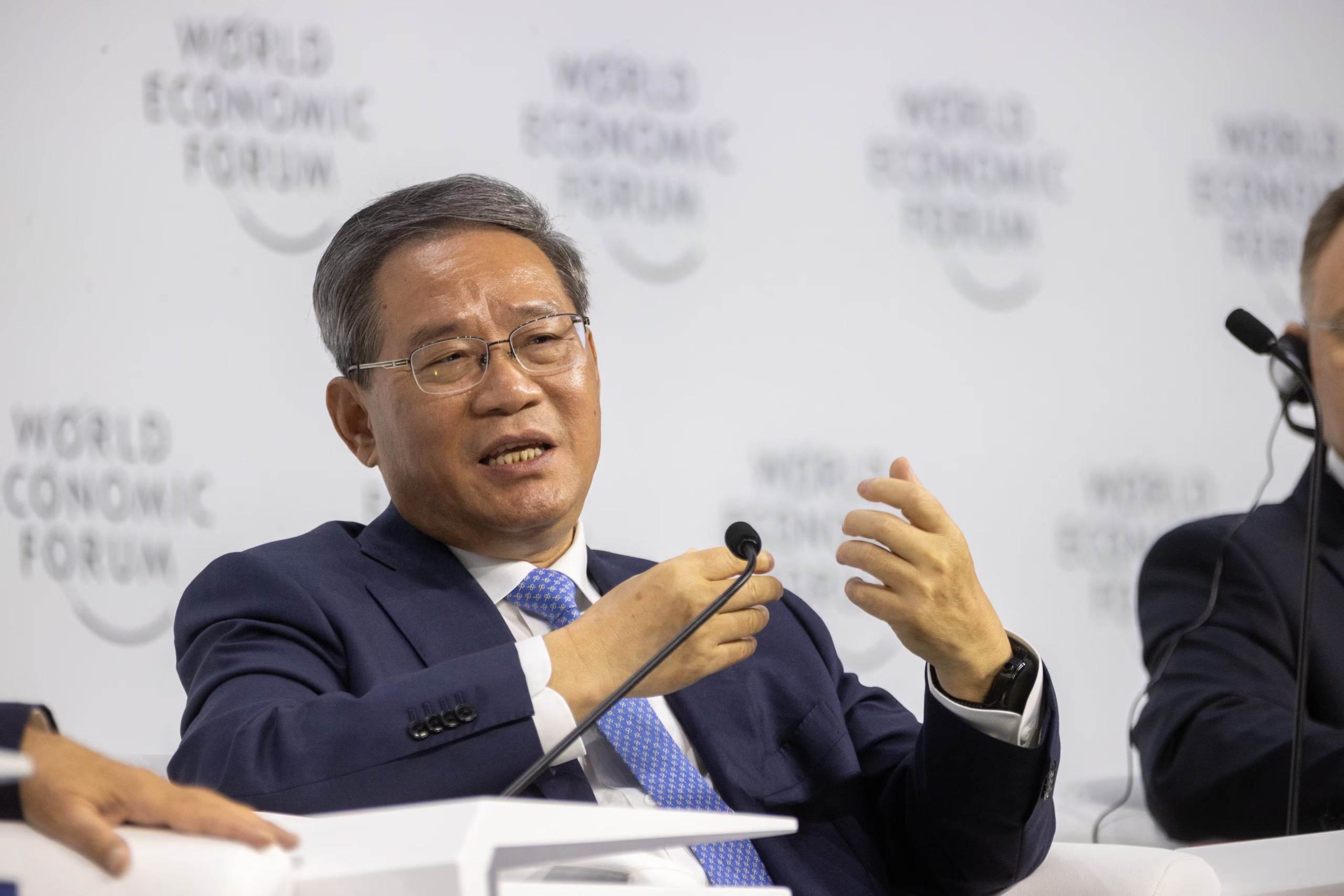Introduction to China’s Economic Journey
China’s economy has been a global powerhouse for decades, lifting millions out of poverty and reshaping international trade. As we move into 2025, the question on everyone’s mind is whether China can sustain its growth amid challenges like trade tensions, a property sector slump, and shifting domestic policies. This article explores China’s economic trajectory, blending data, expert insights, and real-world examples to paint a vivid picture of where the nation stands.
The Big Picture: China’s Economic Performance in 2025
China’s economy has faced scrutiny, with some analysts questioning official GDP figures. Yet, the nation’s resilience shines through in its trade surplus, manufacturing strength, and policy shifts. In 2025, China is navigating a complex landscape but remains on track for growth, driven by strategic reforms and global demand.
Official vs. Real Growth: The GDP Debate
Official data from China’s National Bureau of Statistics (NBS) reported a 4.8% GDP growth for the first three quarters of 2024, with projections for 2025 hovering around 4.5–5%. However, independent analyses, like those from the Rhodium Group, estimate actual growth at 2.4–2.8% in 2024, suggesting official figures may be inflated. Despite this, the U.S. Federal Reserve’s 2025 research found alternative indicators—like trade and consumption—aligned with official claims, hinting at a more robust economy than critics suggest.
Key Drivers of Growth
Several factors are propelling China forward in 2025:
- Trade Surplus: A record $1.2 trillion trade surplus in 2024, with exports (excluding the U.S.) growing by $400 billion in 18 months.
- Manufacturing Strength: China’s manufacturing surplus hit $2 trillion, reinforcing its role as the world’s factory.
- Policy Shifts: Aggressive interest rate cuts and a 10 trillion yuan ($1.4 trillion) local government debt refinancing program signal proactive measures to stabilize growth.
Challenges to Overcome
Despite these strengths, China faces hurdles:
- Property Sector Slump: New construction starts are down 68% from their peak, impacting household wealth and consumer confidence.
- Deflationary Pressures: The GDP deflator has been negative for nine consecutive quarters, raising concerns about deflation.
- Trade Tensions: Potential U.S. tariffs of up to 60% could disrupt exports, though yuan depreciation may offset some impacts.
Sector-by-Sector Breakdown: What’s Fueling Growth?
China’s economy is a complex machine, with each sector playing a unique role. Let’s break down the key contributors to growth in 2025.
Manufacturing: The Backbone of China’s Economy
China’s manufacturing sector remains a global leader, driven by its ability to produce goods at scale. In 2024, the manufacturing surplus reached a record $2 trillion, fueled by demand for electronics, machinery, and green energy technologies.
Investment in Green Energy
China’s push for sustainable energy—think advanced hydropower and next-generation nuclear—has made electricity secure and affordable. I recall visiting a solar panel factory in Jiangsu last year; the sheer scale of production was staggering, with workers proudly showcasing panels destined for Europe and Africa. This sector is expected to grow further in 2025, with government-backed investments boosting output.
Trade and Exports: A Global Lifeline
China’s trade surplus hit $1.2 trillion in 2024, a testament to its export prowess. Even with U.S. tariffs looming, non-U.S. exports grew by $400 billion in 18 months, driven by demand from Asia and Europe.
Navigating U.S. Tariffs
The threat of 60% U.S. tariffs is real, but China’s response—potentially letting the yuan depreciate—could soften the blow. For example, a weaker yuan makes Chinese goods cheaper abroad, maintaining competitiveness. This strategy has worked before, like in 2006 when China’s export growth surged post-WTO entry.
Household Consumption: A Mixed Bag
Household consumption is projected to grow at 3.5–4.5% in 2025, contributing 1.5–2.0 percentage points to GDP. However, negative wealth effects from the property crisis and fragile labor markets are dampening consumer confidence.
The Real Estate Hangover
The property sector’s decline has hit households hard. Imagine a family in Shanghai, watching their home’s value drop 20% since 2021. They’re less likely to splurge on a new car or vacation, opting instead to pay down mortgages. Yet, stabilization in property prices is expected in 2025, which could spark a cautious recovery in spending.
Government Spending: A Stabilizing Force
Local government infrastructure investment is set to stabilize in 2025, thanks to expanded fiscal spending and special treasury bond issuance. The government’s “appropriately easing” monetary policy, a shift not seen since the global financial crisis, signals bold action.
Infrastructure as a Growth Engine
From high-speed rail to urban metro systems, China’s infrastructure spending is legendary. The World Bank notes that the Zhengzhou Urban Rail Line 3 serves over 140,000 passengers daily, a small but telling example of how public investment drives economic activity.
Comparing China’s Growth to Global Peers
How does China stack up against other major economies in 2025? Let’s look at a comparison.
| Country | Projected GDP Growth (2025) | Key Strength | Key Challenge |
|---|---|---|---|
| China | 4.5–5% | Strong trade surplus, manufacturing | Property sector slump, deflation |
| United States | 2.5–3% | Consumer spending, tech innovation | High debt, inflation risks |
| India | 6.5–7% | Young workforce, digital growth | Infrastructure gaps, policy delays |
| European Union | 1.5–2% | Stable institutions, green energy | Aging population, energy costs |
Analysis of the Comparison
China’s growth rate, while lower than India’s, outpaces the U.S. and EU, driven by its trade and manufacturing strengths. However, its property sector woes and deflation risks are unique challenges not faced to the same degree by peers.
Pros and Cons of China’s Economic Strategy
Pros
- Resilient Trade: A massive trade surplus cushions against external shocks.
- Policy Flexibility: Aggressive rate cuts and debt refinancing show adaptability.
- Global Manufacturing Dominance: China’s supply chain efficiency is unmatched.
Cons
- Data Skepticism: Questions about GDP accuracy erode investor trust.
- Property Crisis: Ongoing deleveraging limits household spending.
- Trade Risks: U.S. tariffs could disrupt export growth.
People Also Ask (PAA) Section
What is China’s GDP growth target for 2025?
China’s official GDP growth target for 2025 is around 5%, though independent estimates suggest 4–4.5%. The government’s focus on consumption-driven growth and technological self-sufficiency underpins this target.
How is China addressing its property sector crisis?
Stabilization measures, like increased fiscal spending and debt refinancing, aim to halt the property sector’s decline. New starts are down 68% from their peak, but 2025 could see a leveling off.
Are U.S. tariffs impacting China’s economy?
Potential 60% U.S. tariffs pose a risk, but China’s response—yuan depreciation and boosting non-U.S. exports—mitigates some impact. The trade surplus remains a key strength.
Where can I find reliable data on China’s economy?
Trusted sources include the World Bank, IMF, and China’s NBS for official data. Independent analyses from the Rhodium Group or OECD offer critical perspectives.
What tools can I use to track China’s economic performance?
Bloomberg Terminal, Trading Economics, and IMF’s World Economic Outlook provide real-time data and forecasts. Free resources like X posts can offer sentiment but require verification.
Real Stories: The Human Side of China’s Economy
Let’s ground this in reality. Meet Li Wei, a factory worker in Shenzhen I spoke with last year. He works at a plant producing electric vehicle batteries, a sector booming due to global demand. Li’s wages have risen 10% since 2023, but he’s cautious about spending. “My parents lost money on their apartment,” he told me, “so I’m saving for my son’s education.” His story reflects the broader tension: rising opportunities in some sectors, but caution due to property market woes.
On the flip side, consider Zhang Mei, an entrepreneur in Hangzhou who started a green tech startup. Her company, backed by government subsidies, exports solar panels to Southeast Asia. “The government’s energy investments are a game-changer,” she said. Her optimism highlights how policy shifts are creating winners in China’s economy.
Policy Shifts: China’s Bold Moves for 2025
China’s leadership isn’t sitting idle. The December 2024 Politburo meeting called for “extraordinary” economic support, a rare move signaling urgency. Key actions include:
- Interest Rate Cuts: Aggressive cuts to boost liquidity.
- Debt Refinancing: A 10 trillion yuan program to ease local government burdens.
- Stock Market Support: New central bank liquidity facilities to stabilize markets.
These moves contrast with past caution, showing a government willing to act decisively. For instance, the mid-year budget adjustment in 2024 was the first since the Asian financial crisis, a bold step to counter slowdown fears.
The Role of Technology and Innovation
China’s 14th Five-Year Plan (2021–2025) emphasizes technological self-sufficiency, a response to global supply chain disruptions. Investments in AI, semiconductors, and green energy are paying off. For example, China’s dominance in electric vehicle production—think BYD or NIO—is reshaping global markets.
AI and Semiconductors
China’s push to reduce reliance on foreign chips is gaining traction. Domestic firms like Huawei are developing advanced processors, despite U.S. sanctions. This shift not only boosts growth but also enhances national security.
Green Tech Leadership
From solar panels to wind turbines, China leads in green tech. The government’s investment in sustainable energy ensures cheap, reliable electricity, a competitive edge for manufacturers.
Global Context: How China Shapes the World Economy
China’s growth doesn’t happen in a vacuum. Its trade surplus and manufacturing prowess influence global markets. For instance, a stronger Chinese economy boosts demand for raw materials from Australia and Brazil. Conversely, U.S. tariffs could ripple through global supply chains, raising costs for consumers worldwide.
A Balancing Act with the U.S.
The U.S.-China trade war remains a wildcard. If tariffs escalate, China’s yuan depreciation strategy could spark a currency war, impacting emerging markets. Yet, China’s pivot to non-U.S. markets shows adaptability, with exports to ASEAN countries surging.
FAQ Section
Is China’s economy growing in 2025?
Yes, projections estimate 4.5–5% GDP growth, driven by trade, manufacturing, and policy support, though challenges like deflation and property issues persist.
How reliable are China’s economic statistics?
Official data may overstate growth, with independent estimates suggesting 2.4–2.8% in 2024. However, alternative indicators like trade align with official figures.
What are the risks to China’s growth?
Key risks include U.S. tariffs, a prolonged property slump, and deflationary pressures, which could dampen consumer spending and investment.
How is China supporting its economy in 2025?
Through interest rate cuts, a 10 trillion yuan debt refinancing program, and infrastructure spending, China is taking bold steps to stabilize growth.
Can China maintain its global economic influence?
Yes, its trade surplus, manufacturing strength, and tech investments ensure continued influence, though trade tensions and domestic challenges require careful navigation.
Conclusion: China’s Path Forward
China’s economy in 2025 is a story of resilience amid adversity. While skeptics question GDP figures, the nation’s trade surplus, manufacturing might, and bold policy moves signal growth potential. Challenges like the property crisis and trade tensions loom large, but China’s adaptability—seen in stories like Li Wei’s and Zhang Mei’s—offers hope. As the world watches, China’s ability to balance domestic reforms with global pressures will shape not just its future, but the global economy’s too.
For more insights, check the World Bank’s China Economic Update or track real-time data on Trading Economics. Stay curious, and let’s see where this economic giant heads next.





